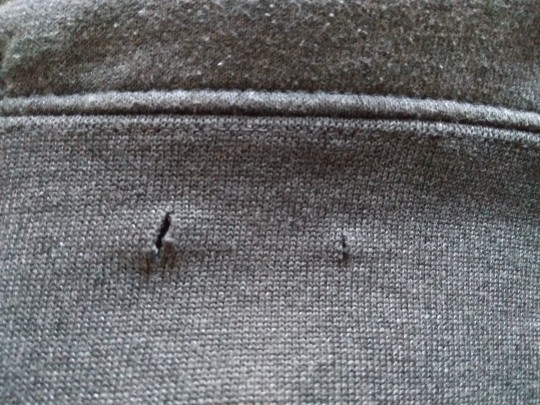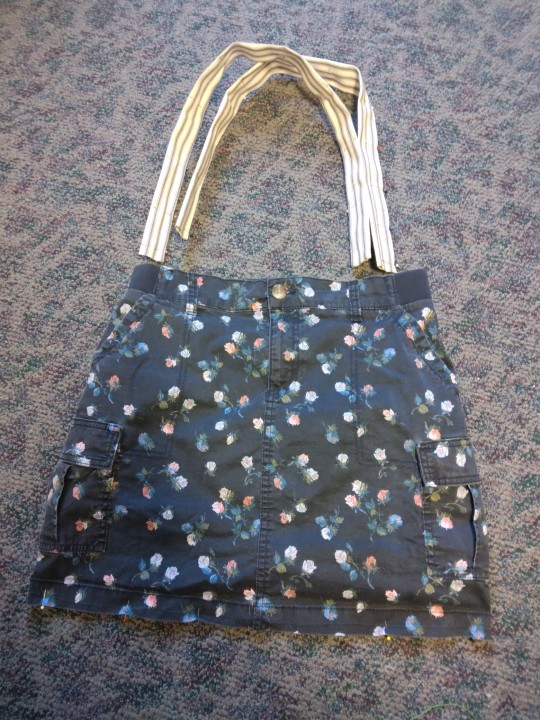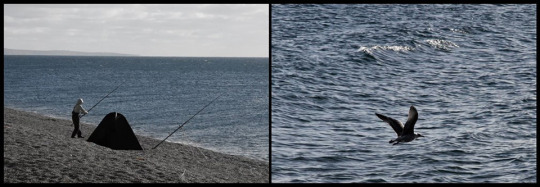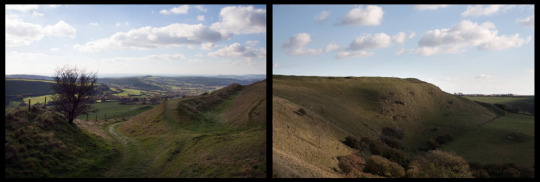#Finally out for the summer... free from SCAD...
Explore tagged Tumblr posts
Text

Watch Blue Beetle 2023 the first movie to earn one beetillion dollars
#DC#Blue Beetle#Jaime Reyes#DC Comics#DC Universe#DCU#Xolo Maridueña#Blue Beetle 2023#Blue Beetle Movie#Cryptid Art#This was finished a while ago but I kept forgetting to post it 😭#Finally out for the summer... free from SCAD...#For now...#I also have a Talking Heads piece but I'm waiting to post that until this post is a few days old
128 notes
·
View notes
Text
Today's Mending
I'd really hoped to be well enough to sit up at my sewing machine today and knock through a pile of mends that are waiting on the machine. No such luck; my temp went back up today. Two steps forward, one step back.
"I will no longer berate myself for resting," I said as I laid in bed for three hours after waking up. "I will no longer berate myself for resting," I chanted as I sewed while bending in strange positions on the floor. "I will no longer berate myself for resting," I promise myself, taking cough syrup and ibuprofen and lying down again.
So here's what's been done today. I enjoyed it. I don't need to punish myself for doing less than yesterday. Anything I get to take a needle to is a blessing and a joy.

First up is my brother's suitcoat. Yep, the brother with the 30" waist and the 40" hip. He asked me to take it in. I've never messed with tailoring coats, but I gave it a shot today. I basted the center back seam in sort of a diamond shape. So far I don't like it and it makes weird bubbles.
I watched a tutorial that takes the jacket in at both side seams primarily. I'll have Joe try it on first, once I'm well enough to be around people, and then see what I can do to the jacket.


I found two random little cuts in the hem of this hoodie. Can't imagine what did that, but there they were. I mended a tiny cut in this same hoodie's sleeve yesterday with blue thread, so I carried on with the blue mends.


So, I got some blue fabric from a free bin! The tag shows 4.67 yards for $4.67 and a purchase date in 2003. I also found two GORGEOUS pillowcase tops in that same bin. The yellow isn't usually my color, but since they're handmade, I just had to take them.
I like to think that these came from the same sewist. Maybe they never put the fabrics together--the yardage seems more fitting for a dress--but I hope they'd be happy to see their hard work being used. They're going to become my primary pillowcases.
Today I just cut out the backs. Some other day I'll sew all the seams.

I was out thrifting, on my way to the register, and this miniskirt jumped off the rack, bit me, and asked to become a tote bag. Well, not quite, but that's essentially what happened. I have serviceable sewing and crochet project bags, but I don't have one big enough for a swimsuit, towel, sunscreen, and change of clothes. This will be it!
I've thought of every way to add a bottom to the bag, and eventually I settled on sewing it shut. I have scads of heavy-duty cream-colored blue-striped canvas (from the same free bin! I'm saving it to make a corset), so I'm making the straps out of that. Today I just cut and pinned them. I'm finally coming around to the trend of stripes with flowers, I guess.

I cut out a couple more patches for these awesome summer shorts. Then I remembered that I'm sick and exhausted. And that somebody else has my iron right now. So, they can wait.
#cj sews#diy#sewing#solarpunk#mending#beginner sewing#it's not waste until you waste it#use it up wear it out make it do or do without#pillowcase rescue#miniskirt bag#solarpunk shorts
57 notes
·
View notes
Text
Powerball 실시간파워볼사이트 was performed as part of a syndicate
The Spanish Superdraw-Powerball 실시간파워볼사이트 공유 is drawn on a monthly basis, allowing the prize fund to grow significantly each month.
A average month gives 84 Million Euros in prize money. Other months, like as July, January, and December, offer significantly bigger Powerball prize pools, which regularly outnumber the Euro Millions Powerball. As a result, it has become increasingly popular among Powerball players around Europe.
The Euro Millions Powerball frequently exceeds $100 million, while the Spanish Powerball is always at least 84 million euros (except in August, when it isn’t drawn).
King Charles III of Spain, believe it or not, founded the Spanish Powerball in the late 1760s. The first Spanish Christmas Powerball was drawn in 1812, and the term ‘Sorteo de Navidad’ was chosen in 1892.
The Christmas Powerball is the world’s largest Powerball in terms of cash payouts, with the top prize, known as El Gordo, now standing at $2.3 billion. 파워볼사이트 bestpowerball
Every month, a Spanish Powerball draw of 84 Million is held, which is larger than nearly all of the UK’s National Powerball drawings and the majority of Euro Millions Powerball draws.
August is the only month that does not have a draw.
The Superdraws are sometimes more 실시간파워볼사이트 리스트 larger than the 84 Million, and they have unique titles.
The super draw for El Nio (the Spanish word for this lottery draw is Sorteo de El Nio) happens in January, and it is for 840 Million. Participating in one of our syndicates ensures you at least three cash prizes in this draw. Now you can play!
In the summer, the San Ildefonso Powerball is held. The winner will be announced in July, with a prize pool of $150 million. Now is the time to have some fun!
Finally, El Gordo (“the Big One”) is a one-of-a-kind Spanish Powerball with a 2.3 billion euro prize pool. Now is the time to have some fun!
You may now play the Spanish Powerball online from anywhere in the world, not only improving your odds but also getting a better bargain.
If you engage in an online Spanish Powerball syndicate utilizing VWD’s Powerball, you are guaranteed to win a prize.
The Number One Way to Increase Your Powerball Winnings
Is it possible to improve your chances of winning the Powerball? Without a question, there is. It took a while for me to comprehend what was going on. I’d use my 메이저 실시간파워볼사이트 Powerball software tool to research Powerball number patterns and trends and come up with a good play list for the upcoming drawing. The secret was to include all six winning numbers on the play list. That way, I knew I’d have a far better chance of winning than everyone else.
However, because I was so aggressive, I would construct a short play list to improve my chances of winning the lottery, and as a result, my list would only contain 4 or 5 of the winning numbers. This was much too often, and I might go weeks, if not months, without feeling loved. So I stopped playing and resolved to abstain till I found it out.
The Secret 실시간파워볼사이트 가입 to Consistent Powerball Playing
I knew my Powerball software program’s analysis was right; after all, 4 or 5 of the winning numbers were on my play list on a regular basis, and every now and then I’d get all 6. As a result, I came up with a second list. This list contained all of the numbers from my aggressive play list as well as all of the numbers that I considered to be marginal choices based on my Powerball software analysis. When it came to drawing time, these were the numbers I wished I had played.
free australian 파워볼게임 powerball winning tips
But this isn’t the end of the story. There will be more to come. This needed a lot of self-control on my part. My Powerball money was split into two parts: one for my aggressive play list and one for my backup list. The truth is that I planned to spend the most of my money on the aggressive play list since I am an aggressive player. But I had a feeling things wasn’t quite right. So, if I only had $30 to spend, I’d put $10 towards the aggressive list and $20 toward the backup list. Here’s why everything turned out so beautifully.
If all six winning numbers were on my aggressive play list, they were also on my backup list, giving me a total of 30 Powerball wagers (or lesser prizes). I had a backup list if none of the six were on my aggressive list. And, more often than not, my backup would come to my rescue.
Play as if you’re a pro.
This strategy is used by businesses, farmers, and professional gamblers all around the world. It’s referred to as hedging your bets. ‘Don’t put all your eggs in one basket,’ to put it another way. Businesses and farmers utilize the Futures Market to protect themselves from unforeseeable calamities that may bankrupt them. Professional horseplayers bet on their favorite horse to win, but they also bet on their horse to come second or third (just in case).
If you want to have more fun playing the Powerball, don’t put all of your eggs in one basket.
EuroMillions 실시간파워볼사이트 분석 is a European version of the Powerball.
Les and Samantha Scadding won half of the £90 million Powerball jackpot on Friday, November 6, 2009. EuroMillions, the European lottery, had once again paid out. The remaining £45 million was also given to a UK resident.
A European Powerball, which had been proposed since the 1990s, did not become operational until February 7, 2004 due to disputes. Total sales are already in the billions of euros, with monthly ticket sales nearing 100 million euros.
The initial draw was held by Camelot in the United Kingdom (together with the UK Powerball draw), Loterias y Apuestas del Estado in Spain, and Francaise des Jeux in France. In October 2004, Portugal, Luxembourg, Austria, Belgium, Ireland, and Switzerland joined, making it a truly European Powerball.
The jackpot ‘rolling over’ (when the jackpot is not won, it is carried over and added to the jackpot for the following week) and the jackpot rising add to the excitement. However, according to EuroMillions rules, this can only happen eleven 안전한 실시간파워볼사이트 times, therefore the twelfth week will always produce a winner. The jackpot in European Powerball is usually won by matching five balls and two lucky stars, however on the twelfth rollover week; this may be reduced to five balls and one lucky star.
In February 2007, a guy from Belgium received the second-largest payoff from the, which was 100 million euros. However, according to the euro Powerball statistics, the top reward was a staggering 115 million euros paid to a lady in Ireland in July 2005 after the jackpot had rolled over for nine weeks.
Tickets are two euros or two pounds, with a three-euro ‘plus’ option available in Ireland and Portugal. In Paris, the winning numbers are drawn every Friday night. The contributions vary according to the amount of money given by each member country and, with the exception of Switzerland, are usually tax-free.
Camelot, the UK Powerball draw organizers, have introduced the Millionaire Raffle Game to the European Powerball, which produces a new millionaire every Friday. Without a doubt, the EuroMillions is largely recognized as a real 검증된 실시간파워볼사이트 European Powerball, with minor differences, and is extremely popular in each member country where it is played.
0 notes
Text
Brendan Jackson
By the time I came to the Mothership, I changed my plan...
I had intended to make a series of photographs using a battered old mahogany and brass Gandolphi camera with a zeiss lens, dating from the 1920’s. I expected the images to be somewhat experimental. The last time I used this was nearly 30 years ago and then the images were pin sharp in the centre but a little fuzzy wound the edges, so who knows how they might turn out now. I had the camera and tripod and a black sheet to cover myself with; I had sourced some 5 x 4 Ilford black and white HP5 film; I dug out old darkroom equipment but I couldn’t find the double dark slides I thought were in the loft, so I found some online. They turned up two days before I was due to travel, only I had been sent 10 x 8 slides in error. I tried the local college, who still keep a chemical darkroom, but the technicians were away (half term). So the plan changed.
I know Dorset from my childhood vacations with my favourite auntie who lived in Dorchester. I had spent a lot of teenage holidays here and had my first real job at the (old) Dorset County Hospital, working in the kitchens. I undertook my first photographic project and exhibition here ‘A Brief Guide to Piddletrenthide in the Valley of the River Piddle’, entirely inspired by local people, their stories and connection to the place they lived and worked. It’s what has interested me ever since.
So I decided to undertake a series of walks, following in the footsteps of others here (though not Richard Long on his 1975 Cerne Abbas walk). I would walk by day, as the weather was mostly fine – though one rain swept day I spent in the Dorset Heritage Centre digging through archives – then at night I lit the stove and read old local guidebooks and literature, as well as a few Ray Bradbury stories (one highlight of my childhood holidays was reading Bradbury paperbacks and comics bought from a shop on the esplanade in Weymouth).
My Aunt first came to Dorset in the Spring of 1946. She came from Birr in Ireland where she worked in a leather factory and corresponded with a certain Mr Clark of Street in Somerset (who offered her a job, which brought her to England and provided her with a fine reference). She came to Dorset County Hospital to train as a nurse. She was 26 years old. Her cousins in Wimbledon took their holidays in Dorset and told Monica she was less likely to feel homesick in a town like Dorchester, as it had a similar character to Birr. Indeed it did and Monica lived the rest of her life there.
Here are some of my reflections during this time...
A single walk in straight line
The sea is calm enough, a little bit of breeze but not the kind of blaster to blow the cod inshore. He’s been here since 6.30am and now it’s early afternoon. I’ve had a few nibbles, nothing much, he says, but I really don’t mind, I just love being out here. He carefully skewers lugworm onto a hook. He also has some squid as bait for the cod, but he might save that for another day. In the warmer months, this beach is a popular site for mackerel, when they can come inshore in large numbers. Some old second world war sea concrete defences, known as the Dragon’s Teeth, tumble down into the sea, and it’s here they say is the best mark for the fishing. The fish can be caught at close range as the beach shelves steeply. What can you catch here? In the summer, Bass and Gurnard, Bream, Dogfish, Scad, Trigger Fish and Flatties. Mackerel of course. Now, in winter, Cod and Codling, Whiting, Plaice and Rockling. I don’t know half these names they tell me, so I nod and smile. Well, good luck, I say and carry on my way. In the distance it’s clear and sharp enough to make out the lighthouse at the end of the Isle of Portland.

A Circular Walk around Eggardun Hill
At the end of the old roman road from Dorchester, the ‘Highway of the West’, at the spur of a curving ridge rises the Iron Age hill fort of Eggardun. It may be lesser known or appreciated than triple ramparted Mai Dun, but the views from here are far superior, of countryside that has barely changed in my lifetime, or perhaps even in the last three hundred years. The sweep of the coast towards Golden Cap and Devon beyond, the dazzle of the sea, a glimpse of Pilsdon Pen, in between the soft hills and downs, woods and valleys, scattered farm buildings, strip lynchets revealed by the angle of the sun. Now only inhabited by rabbits and sheep, these slopes and ditches were constructed of huge mounds of chalk, no doubt a gleaming white beacon when first raised up by the metal users. The bareness of the grass now testifies to ‘a long friendship with rough winds’, as one walker described these heights in the 1930’s, striding past with her puppy dogs, Bill and Mr Bundy, heading for Burton Bradstock and the Chesil Bank. Some years later, one farmer-writer from these parts gazed at a fossil in his hand (he called them books of stone), thrown up from ploughed chalk on the downland. He looked out over the landscape, at ‘nature’s vast, relentless roll’, reflecting on the rise and fall of empires, the clash of nations, massacres and crimes, past glories of philosophy and art. He told himself, ‘Here, order does not break.’ Today the wind relentless as ever, I ponder the wonders of the modern age; the flushing toilet, running water, a mirror, a cooking fire.

A semi-circular walk from Overcombe to Nothe Fort
I am not staying in the old seaport and pleasure resort, which was once called ‘The English Naples’. I never have, though I know several folk who booked a bed and breakfast or caravan over the years, enjoying the extended frontage – the bay is nearly five miles across. Such visitors were was once noteworthy, articles in the Dorset Daily Echo reporting the arrival of 500 families from the Black Country by train in just one weekend, determined to enjoy their holiday here in Weymouth, surely cementing its reputation as a premier destination with ‘wonderful sands, a good water supply and a splendid climate’. Had they a Black Country flag back then, they would have been as popular a purchase as those paper ones of the Union Jack, of Saint Andrew and the Welsh Dragon, along with miscellaneous emblems of France, Italy and Spain that adorned a thousand sandcastles. (I don’t remember there being an Irish flag available).
Though locals disdainfully called these holidaymakers ‘grockles’, a visitor in 1804 was far less charitable of the locale itself. He intended to visit his brother who was with the Royal Squadron in the bay. On arrival, he paid the modern equivalent of £58 to a local boatman who dropped him at the first royal barge in the bay they came across, which is then stranded in an impenetrable sea mist and while waiting for dawn runs foul of a cable. Finally he is rescued by the crew of a cutter at anchor who finally take him back to shore. Then he spends his first night’s lodging being tormented by all manner of vermin. He does eventually meet up with his brother, but during his stay he is not impressed by the countryside hereabouts, complaining that he can find no shade from the scorching sun. He thought it a bare and barren place, and the cost of staying here horrendous, prices inflated due to the King’s visit. When he left Weymouth after a week, he was forced to travel slowly as his horse ‘seemed literally starved, his ribs starting through his skin’, although he had paid an outrageous sum of one guinea for his keep.
Boating in Weymouth is recommended, as one guide from the 1930’s puts it: ‘the bay being free of dangerous currents and promiscuous rocks’. No mention of mist. I took my first cross-channel from here, for 48 hours in France, in storm tossed seas on the return. I have a strong unpleasant memory of sliding across the deck. There is a small memorial here now to the U.S. Forces who left from here to land at Omaha Beach, with a photograph of some of those soldiers marching down the Esplanade. Over half a million of them passed this way (those called 'The Greatest Generation', probably correctly so if we look to current models). The wind whips up the sand of the beach and a few people run with their dogs by the shoreline (please note, dogs banned from the beach between April and October). Here on a Saturday night in Spring 1946 a young woman was carried off these sands on the shoulders of a British soldier. She was hopelessly drunk. An American sailor was also helping carry her. They were stopped by P.C. Otter. The soldier said she was ill and he was going to take her to a room for the night. Neither soldier nor sailor were able to tell P.C. Otter her name or anything about her, so he took her into custody. She was later charged with being drunk and incapable. She was 19 years old, Polish, of no fixed abode; she said her name was Frances Kolosvonksi and that she had only arrived that day from Aldershot to meet her boyfriend who had been posted here. ‘It was the first time in my life that I had a drink and it will be the last time,’ she said. ‘I had an argument with my fianc��.’ The Chairman of the Magistrates Court concluded, ‘I shall think you are very ashamed of yourself, aren’t you?’ If this was a post-modern musical she might burst into song and say ‘You took the words right out of my mouth’. She meekly agreed, ‘Yes, very ashamed’. She was fined 10 shillings, which would barely cover a single room with breakfast at the Crown Hotel opposite the railway station.

A square walk around the walls with a loop south and east
Loosely follow the perimeter of the old Roman town, marked today by Walks originally planted in the 18th century with lime, sycamore and more recently chestnut – these enclose three sides of the town. By more recently we mean over a century ago. A river walk demarcates the fourth side, where one arm of the Frome runs in an artificially constructed channel used for the water meadows that have kept the town from spreading to the north and north east. The river curves here round old sluice gates and the rise upon which is built the prison (itself on the site of a Norman castle) and beyond that the County Council offices. The excavations in this north west corner to build these offices in the 30’s revealed three roman town houses which were then preserved. One fragment of the original wall still remains, near the statue of Thomas Hardy. Crossing the Frome on the eastern side of the town, it is a short walk of two or three miles to the churchyard in Stinsford where his heart is buried beside his first wife.
On the south side, beyond the line of the walks, lay the site of the town market once busy every Wednesday with fat calves, sheep, lamb and pigs. Here there were markets for farm equipment and implements too; sales displays of new combined side delivery rakes and swath turners, a Watson and Harry 30ft elevator, a Bristol caterpillar tractor, mowing machines, plough and cultivator attachments. Now it’s a car park, charges vigorously enforced.
Across the road, next to the Victorian police station, is Maumbury Rings, the Roman amphitheatre. When the railways came, the engineer Mr Brunel wanted to cut right through here, as well as the ancient earthwork at Poundbury on the north west side of the town, thus raising the ire of many an archeologist and historian, who decried this proposal as the work of ‘barbarian perpetrators’ no less. Mr Brunel was reminded that it was the great Sir Christopher Wren who first marveled at the Rings and made them known to the worlds’ antiquarians when, en route to scry Portland stone, he asked for his coach to be stopped, in order to give them a thorough investigation. Brunel twisted his rails so as to avoid the ancient amphitheatre and built a tunnel under Poundbury, ‘as he may frequently have the opportunity of doing mischief, he would always be found most anxious to avoid it.’

A walk from West Chaldon, looking for the ghosts of poets
It is getting cold, they say there is snow in the North. Just before tea it was raining. She fills the fire grate with twigs she has collected, strips of hazel, then adds the shavings of logs and crumpled brown paper that the bread came wrapped in. She lit the fire and contributed some vitriolic love letters she had never sent, as well as scraps of her verse that had no satisfactory conclusion. Finally she tossed in a few logs of ash and yew. Their cottage was somewhat dilapidated but homely enough for the two of them and the room is quick to warm.
Her lover pulls a face and complains that, after one too many doses of veramon, she is prone to roaming about the place looking white and grim. Her mood lifts though when they walk the downs and follow the shady hidden paths. She is cheered at the sight of the local names: Scratchy Bottom, White Nose, Daggers Gate, Five Marys. They sit holding hands on the highest of the ancient barrows, the sea air invigorating their spirits. Then she truly feels as light as a feather. Later, she will listen to the gramophone and manage to scratch out few lines, something secular. She writes, perhaps for herself only:
Is the hawk as tender
To the belly of its prey –
White belly wet with dew –
As I am to you,
In the same way,
My slender?

The President Decides
Captain Hart gave him back the binoculars wearily. ‘Why do we do it, Martin? This space travel, I mean? Always on the go. Always searching. Our insides always tight. Never any rest.’
‘Maybe we’re looking for peace and quiet. Certainly there’s none on Earth,’ said Martin.
‘No, there’s not is there? Captain Hart was thoughtful, the fire damped down. ‘Not since Darwin, eh? Not since everything went by the board, everything we used to believe in, eh? Divine power and all that. And so you think that’s why we’re going out to the stars, eh, Martin? Looking for our lost souls, is that it? Trying to get away from our evil planet to a good one?’
These sentences are from a short story by Ray Bradbury first published in 1949, an author who revelled in the power and imagination of childhood, of magic, rocketry and science. As a teenager I devoured his collections ‘S is for Space’ and ‘R is for Rocket’ on my holidays in Dorset, sitting in the shade of the beach chalet, admiring the bikinis or watching the naval ships anchor in Portland Roads. Little did I know that near this very spot, back in 1946, Mr Hooper of Overcombe, Weymouth, looked out over much the same view and reflected on the power of the Atomic Bomb now in the hands of the Yanks. He had met enough of them over the last few years, 517,816 of their troops and 144,093 vehicles embarking for Normandy from this port alone, most of them decent enough sorts, but the recent public behaviour of their Joint Chiefs of Staff left a lot to be desired. (You will fid a small monument to those troops on the esplanade.)
He was particularly concerned about the effects of uranium. Thirty years of chemistry had led him to believe that May 15th, the date set for the atom bomb experiments in the Pacific Ocean, may be the end of us all. One was to be an airdrop, one underwater. His reasoning was that seawater contains traces of uranium, therefore any atomic explosion over the ocean will ‘almost certainly start off an ever increasing dissolution.’ In addition, he believed it was impossible to test the seabed for uranium; the testing area may therefore be over a large deposit and a catastrophe was surely waiting in the wings. To conduct the tests, 167 inhabitants were moved from Bikini Atoll to Rongerik Atoll, which had no inhabitants due to an inadequate water and food supply and also because of a belief that the island was haunted by the Demon Girls of Ujae. Regardless, the Americans moved 95 warships of all shapes and sizes to the test area, planning to assess their durability to nuclear attack.
As holidaymakers flocked to the coast again to enjoy the sun (though in reality the weather was mixed that summer), Mr Hooper sent letters to the Sunday papers, hoping for some reaction. He wrote: ‘Those of us interested in nuclear physics know of experiments which certainly seemed safe enough in theory, but which nevertheless ended fatally. Let us pray that this much vaster one does not end in disintegration.’ As they say in the local Dorset dialect, it’s a caddle – a puzzling plight, such a confusing situation that a man does not know what to do first. Some might say Mr Hooper was joppetty joppetty – anxious and agitated over the whole cantankerous affair. The world demonstrably did not end on May 15th, nor at the end of June when the first of three tests was actually conducted, no doubt he waited impatiently and wondered whatever would come next.
As the Americans were coming to understand the effects of fallout, in Paris the designer Louis Réard introduced a new two-piece swimsuit, which he called the bikini because ‘like the bomb, the bikini is small and devastating’. While the inevitable appearance of bikinis on the beach front at Overcombe might have led to an increase in his blood pressure, Mr Hooper would I think have been apoplectic had he been aware the US Army Air Force had put forward a plan to the Pentagon the previous September to destroy 66 Soviet cities and were demanding production of 204 atomic bombs to do so. As it was, production of 39 were approved to eliminate 15 first priority targets. Among them, it was estimated 6 each would be required for Moscow, Leningrad and Kiev, five for Lviv, four for Chelyabinsk, three for Tbilisi, two each for Baku and Grozny. While the majority of his cabinet and nuclear scientists supported the idea of international collaboration to control nuclear power and the abandonment of ‘the policy of secrecy’, the President sided with the military establishment and thus the arms race began.

I would like to thank the Mothership and Anna for the opportunity to ‘switch off’ from the normal daily clutter of life in the city (I had no mobile single or internet here, except when I went to the Dorset Heritage Centre, there catching up with all the Trump news); this was an opportunity to reflect on the stars above, the damp ground beneath my feet, without any other distractions to simply focus on what work I would like to do in the near future and what might be the content and purpose.
www.brendanjackson.co.uk
0 notes